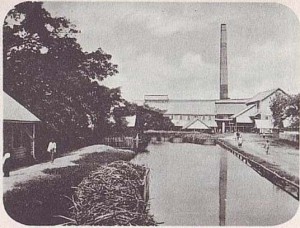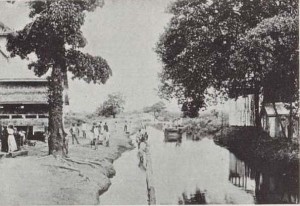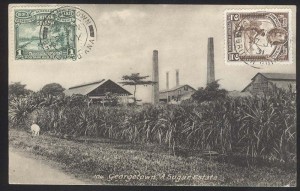
The unstated policy of the state in Guyana throughout the nineteenth century and up to the middle of the twentieth was, “what’s good for sugar is good for British Guiana”. There was more than a kernel of truth in the popular saying that “B. G.” stood for “Bookers Guiana”, after the largest sugar company “Bookers Bros”. The entire state apparatus was geared towards the protection of “King Sugar”.
The Indians that fought for their rights on the plantations were therefore indirectly going up against the power of the state. From this perspective, the Indians on the sugar plantations carried on the most sustained struggle against the imperial state in the post- emancipation era. In effect, they were the pioneers in the struggle for independence of their country.
Harassment
While most of the violence by colonial armed forces – the police and, on occasion the West Indian Regiment – was deployed to quell labour uprisings on the plantations, there were other daily humiliations inflicted on the immigrants.
John Campbell, chronicler of the history of the police force noted that, “Police were employed to levy rents and to act as bailiffs (and) East Indians quite rightly viewed the police as agents or allies of their oppressors”. Matters were so oppressive that Chief Justice Beaumont labelled police harassment of Indians in the 1870s as “galling subjection”.
The laws were changed in 1883; unfortunately, by that time, the practices and image of the police as bully and enemy in the minds of Indians had been set and the damage had been done.
Protests
Since any act on the plantations in protest over their working conditions could be defined as an “overt rebellion” and result in an increased length of indentureship, immigrants did not lightly enter into such actions. Yet the immigrants did protest; one could only imagine the provocations.
We will scrutinize the consequences for the immigrants.
Up to 1869, the official record is fairly bereft of Indian immigrant protests. The “stop- start” nature of the immigration program would have been one reason. There were no shipments after the experiment of 1838 until 1845, followed by another gap to 1848. On resumption, recruitment had shifted to the Bhojpuri area of Bihar and Uttar Pradesh and most of the shipments were from Calcutta.
By 1869, arising out of their cultural uniformity, there would have been the beginning of a critical mass of immigrants on the plantations with some sentiment of community and solidarity.
Conditions on the plantations, by then, would have been volatile as can be gleaned by the bare statistics on population. Of the 69,380 Indian immigrants that had arrived by 1869, 6,523 had returned to India but only 44,936 showed up in the census. It meant that if no one had been born, 17,921 or 26 per cent had died. And many had been born into the institutions of pain and discipline. Something had to give.
1869: Leonora, West Coast Demerara
In July of 1869, forty workers of the shovel gang at Plantation Leonora disputed the wages for work done, and it was alleged that they assaulted a manager. The response was swift after their protest was supported by fellow workers: “Although the colony was the HQ of the 2nd West India Regiment, the police were charged with the first line of de fence.
In 1869, troops were sent to Pln. Leonora after police had been defeated, even though governor said it was a police matter. After the Leonora Riot, the police force was regarded as the most heavily armed police in the British West Indies.”
Even though no one was killed, the protesting workers were arrested, convicted and jailed. The system had begun to perform a “one-two” – first the police would use violence to maintain “order” and then the judiciary would emphasise the condign lesson to the immigrant by applying the “law”. This was to be the pattern for the next hundred years.
The Leonora protest had wide reverberations. A former stipendiary magistrate, William Des Voux, upon hearing of the incident, wrote a forty-page exposé, and sent it to the Secretary of State, Lord Granville, who gave it wide exposure in London. A Royal Commission of Inquiry was sent out in 1870, and in addition to several recommendations, it observed: “The Coolie despises the Negro, because he considers him not so highly civilised; while the Negro in turn, despises the Coolie, because he is so immensely inferior to him in physical strength. There will never be much danger of seditious disturbances among East Indian immigrants on estates so long as large numbers of Negroes continue to be employed with them.”
1870: Countrywide
Strikes and violence swept Plantations Uitvlugt, Hague, Zeelugt, Vergenoegen (West Coast, near Leonora) and Success, Mon Repos and Non Pariel, on the East Coast of Demerara.
At issue were disputes over pay for “tasks”.
1872: Devonshire Castle, Essequibo Coast

Five immigrants killed, seven wounded. The Devonshire Castle protests would be a watershed event, as it represented the first time that Indian immigrants would be shot and killed by the police. It was obvious that the Royal Commission’s recommendations of 1870 were merely a palliative, and there were no lasting reforms of the system. From this point onwards, “strikes” would be deemed as “riots” at which the Riot Act could be read and the strikers shot dead.
The casus belli at Devonshire Castle was the mistrust of the Indians for the judicial system. On Sept 29, Parag had been arrested for assaulting a manager at Devonshire Castle, but was rescued from confinement; he cross-charged the manager. The next day, Parag refused to appear at the Magistrate’s Court where the manager would have been allowed to sit beside the magistrate. Instead, he, along with 250 other immigrants, appeared at the estate and prevented the manager or anyone else from entering.
Twenty-three armed police officers and the magistrate appeared, and the latter ordered the policemen to load their rifles. The police were then ordered to charge – the immigrants stood their ground and one police officer discharged a shot. The other policemen thought the order to shoot had been given, and nine other policemen fired. It is noteworthy that of those who did not fire, were the two Indian police men.
At the Inquest, the policemen’s actions were exonerated as “justifiable homicide”. The Colonist, a paper friendly to planter interests, exulted, “the leaden argument has brought submission quicker than all honeyed words that could have been used.” The “leaden argument” from the police guns was to speak with terrifying regularity against Indians from then on, and helped to make “police” a word for Indians to scare their children.
That the police were invariably Africans did not assist in amicable race-relations between Africans and Indians.
1873: Skeldon, Corentyne, Berbice
The underlying cause was, once again, the widespread mistrust of the judicial system by Indians, and the collusion of the drivers in their oppression.
In this instance, a magistrate fined an immigrant for allegedly inciting others to be absent from work. Aware of the unfairness of the charge, two hundred other immigrants demanded the release of the accused, and the magistrate, in fear, complied. Then the workers demanded that the driver who made the accusation, be handed over.
Other immigrants brought the situation under control yet, the originally charged immigrant and two others were sentenced to five years of penal servitude.
1873: Uitvlugt, West Coast Demerara
The casus belli was low wages for fieldwork. The workers complained to the magistrate, who asked that they return to work and he would examine their complaint.
The workers complied but the manager hired Barbadians at lower rates. The immigrants chased them off and complained again to magistrate, who again promised to investigate. The workers then gathered before the manager’s house, pursuing one ‘Brown’.
They wrecked the house and beat off a party of regular and rural constables. Fifty armed police officers, with the magistrate, appeared, and the Inspector-General himself ordered them to load their rifles. The Indians dispersed and were pursued by bayoneted officers.
Twenty-five men were arrested and charged. The judicial system fulfilled its role by fining the workers.
1879: Skeldon, Corentyne, Berbice
Serious fighting broke out between Indians and Africans during the Muslim Tadjah festival of Muhhoram, and members of both groups were arrested.
The Indians attempted to rescue their comrades, and all police from the Corentyne were mustered after the prisoners were transferred out. Inspector-General Cox, who had also been at Uitvlugt, travelled to Skeldon by train, while armed policemen proceeded by schooner. The crowd had dispersed but fourteen more were arrested, all tried, and sentenced.
1896: Non-Pariel, East Coast Demerara





Comments are closed.